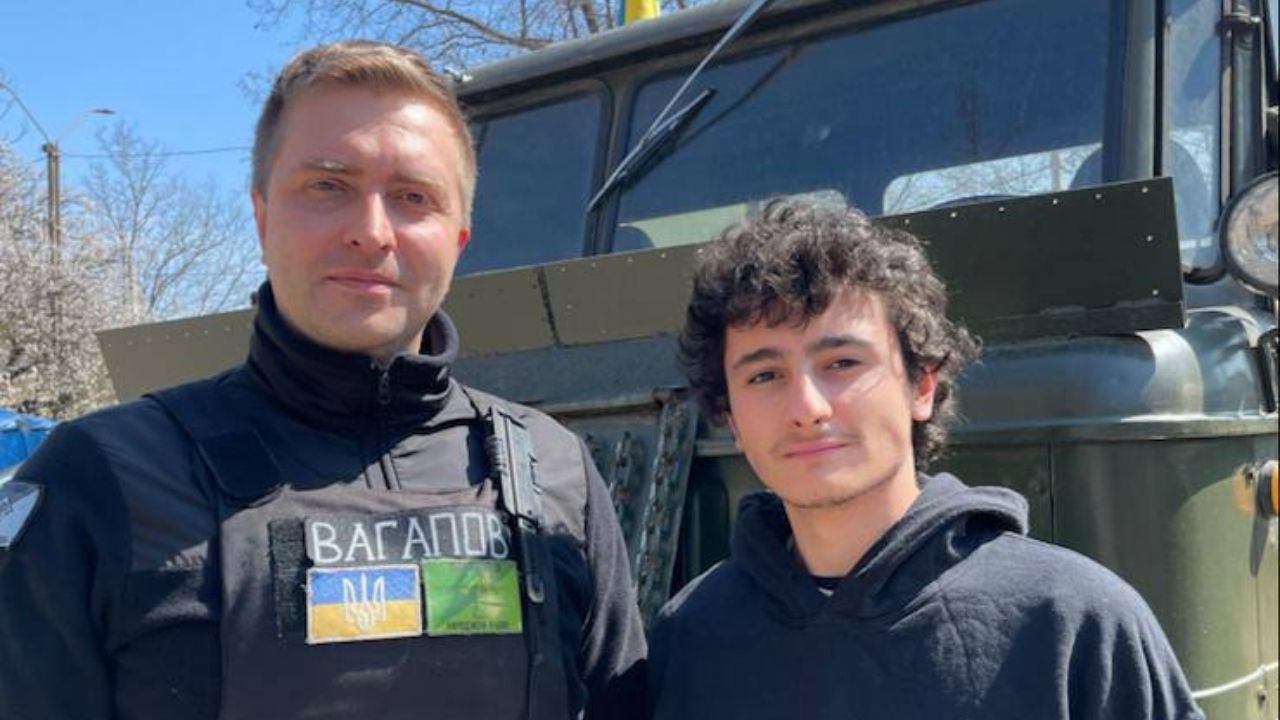Sono stato ospite del Battaglione Militare Volontario della Resistenza Nazionale “Difesa di Odessa. Nato in battaglia”, stazionato a Odessa. Ecco come vengono addestrati i volontari.
Da quando questa fase della Guerra è iniziata (ricordo che l’attacco della Russia è in atto dal 2014) quindi dal 24 Febbraio, sono iniziati con foga i reclutamenti di truppe in ogni parte dell’Ucraina. In particolare, qui ad Odessa, sono state messe in atto finte emergenze in centro città. Lo scopo è osservare come le persone reagissero. Bisogna anche valutare concretamente l’animo delle potenziali reclute, al fine di selezionare i migliori, i più disposti a mettere il bene della Nazione al di sopra del loro. Finti attacchi, o finte bombe, con conseguenti reazioni dei civili.

Un grande numero di soggetti ha recepito la chiamata alle armi. Ma siccome non riuscivano ad organizzare centri di addestramento funzionali per mancanza di strutture, l’esercito si è accordato con la Difesa Territoriale per l’utilizzo di loro strutture di addestramento. Qui si può impartire un sufficiente livello di tecniche militari disparate tra loro per rendere le reclute futuri membri dell’esercito. Le autorità hanno deciso di non consegnare le armi subito, ma di fornire facsimile di legno per evitare disordini. In taluni casi, a persone testate ma non ancora pronte per l’entrata nell’esercito, è concesso di maneggiare vere attrezzature. Questo soltanto sotto stretta sorveglianza di superiori, spesso ufficiali dell’esercito ben addestrati e abituati alla situazione.
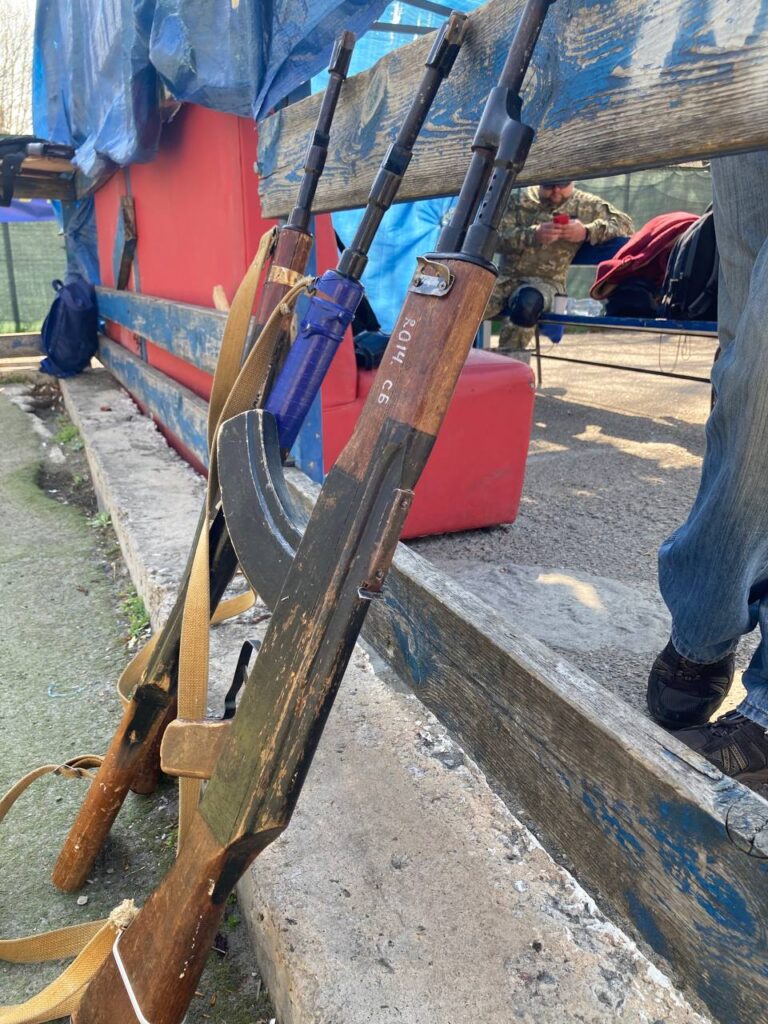
Il battaglione di Andrey Vagapov
Questo specifico battaglione è formato da soggetti che, per svariate cause (infortuni, mancanza di arti o altre inefficienze fisiche) non sono adatti all’esercito regolare. Lo stesso comandante, Andrey Vagapov, essendo stato colpito tre volte. Per questo motivo ha dovuto abbandonare le “hot zones”, ma data la sua stragrande esperienza, sarebbe stato uno spreco: l’Ucraina non può permettersi di congedarlo. Quindi, coniugando una grande esperienza ai vertici, e una ferrea volontà di voler servire la Nazione, una volta terminato l’addestramento le truppe diventeranno riserve, destinate quindi alla seconda linea. Ciò non toglie che, magari in piccoli gruppi, soggetti scelti di questa compagnia possano svolgere determinati compiti meglio di altri gruppi. Le parole del comandante:
Per sparare con un cecchino vai bene anche se hai una gamba artificiale.
Reclute e addestramento
L’obiettivo di truppe da formare era di 500 unità, ma si sono presentati in 2500. Circa 100 sono stati scartati per instabilità psichica inadatta al ruolo di milizia. A causa di questo grande flusso, all’inizio c’era grande confusione organizzativa. Sono stati creati 5 gruppi di addestramento, ognuno con compiti diversi, senza alcuna differenza tra uomo o donna, dai diversivi militari, al supporto di salmerie. Nell’addestramento c’è un ampio ventaglio di attività.
I reclutati vengono addestrati tramite simulazioni, a attuare medicina tattica (ho assistito a una parte di lezione, nella quale si imponeva, durante il soccorso di un commilitone a terra, di agganciare la lingua al labbro inferiore con un ferretto, bucandola, per evitare che possa essere causa di soffocamento). Ma anche a resistere psicologicamente in battaglia, a offrire supporto alle vittime civili e a combattere sia un piccoli che grandi spazi, in grandi o piccoli gruppi, e tattiche di camuffamento. Bisogna anche maneggiare piccole attrezzature meccaniche e tecniche di difesa, con specifica attenzione alla difesa anticarro dai temibili blindati russi.
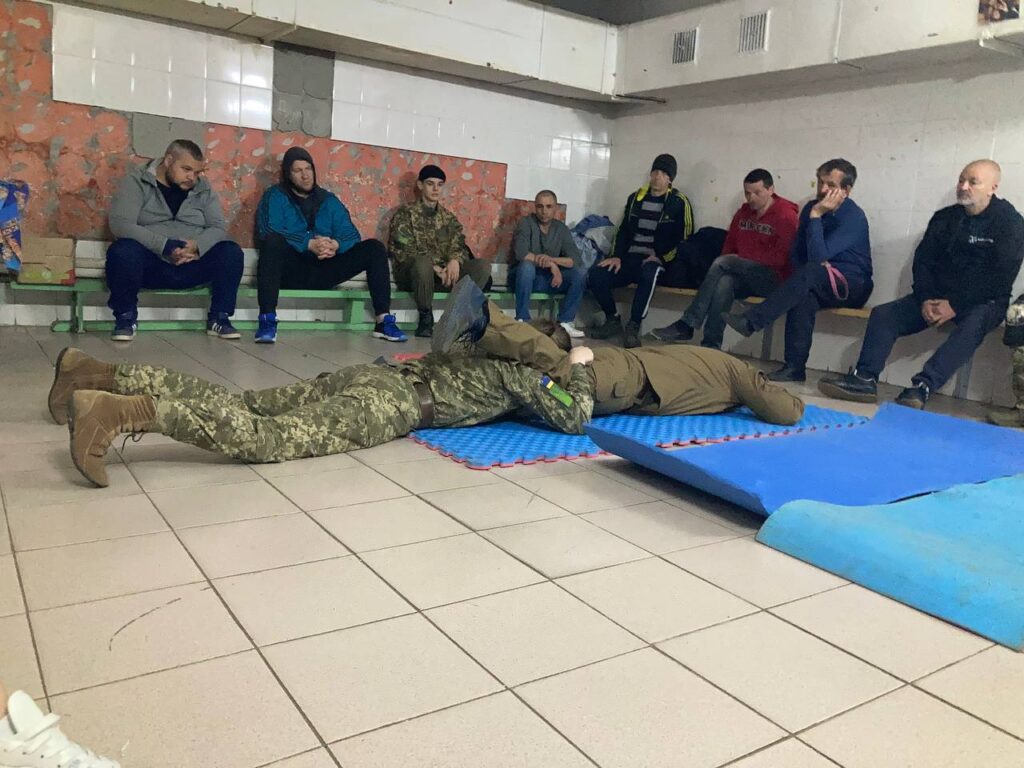
Le tecniche di difesa
Al termine dell’addestramento i miliziani saranno preparati anche a costruire una sorta di triboli in legno e metallo, da posizionare sotto il terreno per ostacolare l’avanzata appunto dei cingolati nemici. L’80% di loro ha già pronta l’attrezzatura necessaria, giubbotti antiproiettile e armi, e un primo contingente del 222esimo è già in seconda linea, a difendere le loro famiglie, le loro case e la loro Nazione. Sta ora attendendo la conferma ufficiale del Ministro della Difesa per diventare un battaglione della 122esima brigata.
Nella struttura dove avviene l’addestramento, sono presenti postazioni che forgiano le piastre per i giubbotti antiproiettile, spranghe di ferro per difesa territoriale e lastre di ferro per fornire corazze a mezzi prima civili, ora convertiti in militari da questo lavoro. All’interno della struttura, c’è anche una postazione dove volontari senza tregua lacerano stoffe per creare camuffamenti per trincee e mezzi. Questo point produce più camuffamenti di tutta la regione di Odessa messa insieme, ad ora più di 8500 metri quadri sono stati creati qui durante il primo mese.
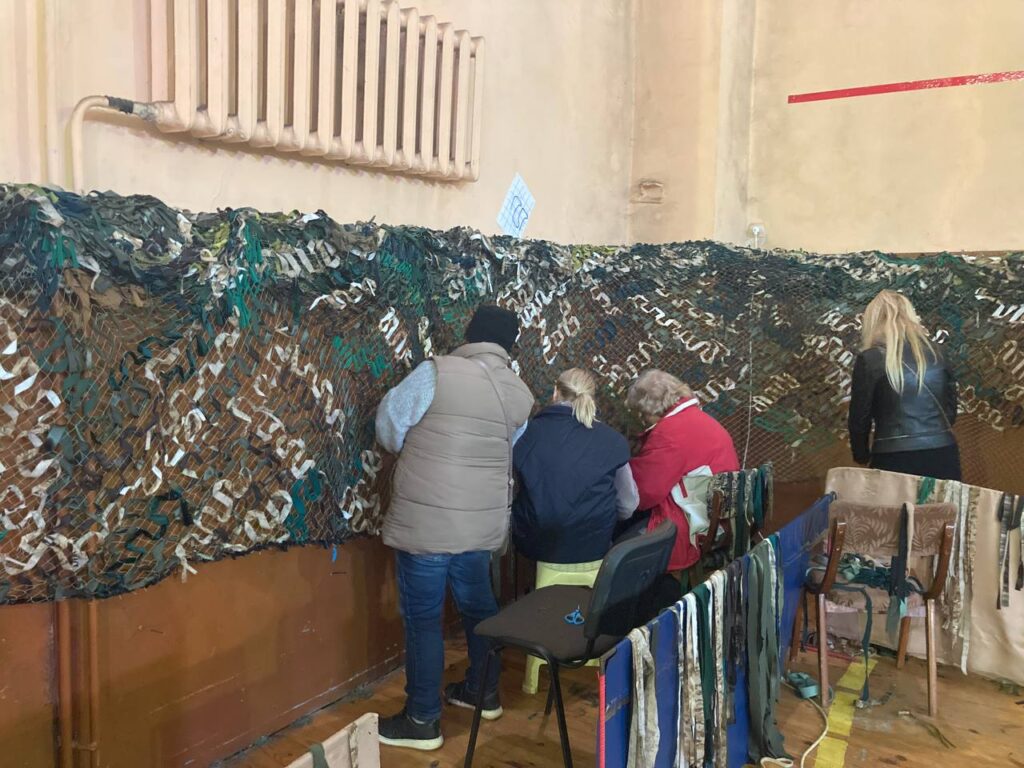
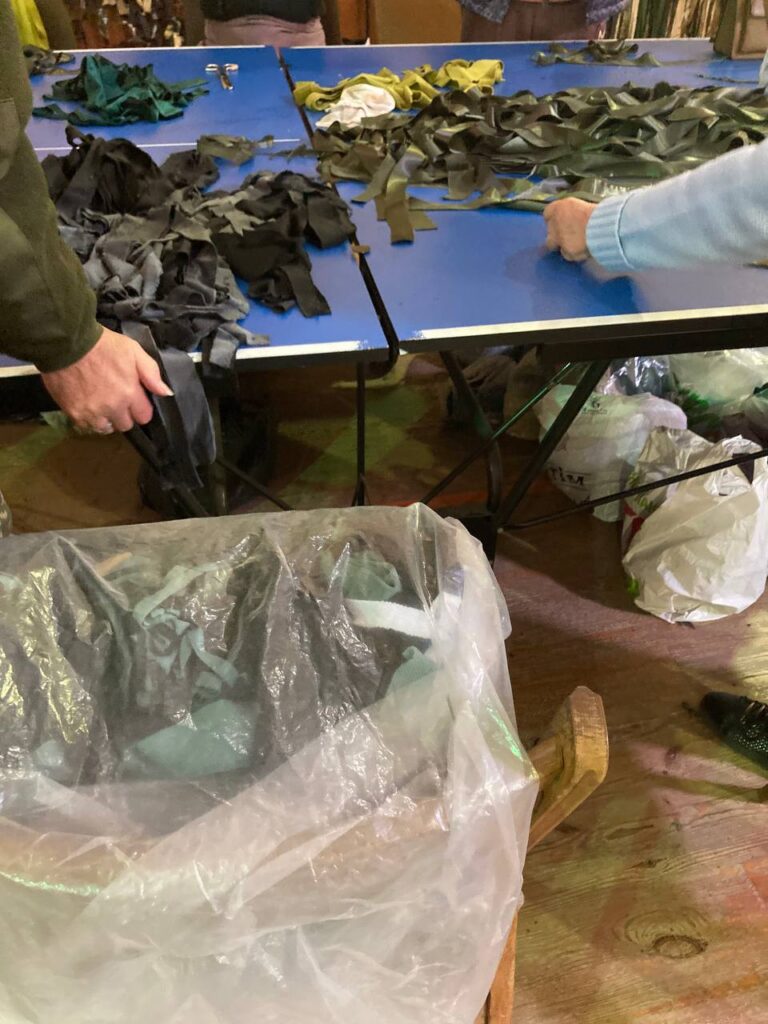
L’organizzazione giornaliera
Durante la prima settimana di guerra l’intero luogo (addestramento, fucina e produzione camuffamenti) era attivo 24 ore su 24. Ora l’orario va dalle 9:00 alle 19:00 circa, anche se ogni notte qualcuno rimane non volendo a presidiare il complesso. Le persone in più che vogliono aiutare sono posizionate in uffici che si occupano di burocrazia: creazione documenti e permessi necessari per l’attività. Ogni giorno, c’è un traffico di oltre 100 persone di soli militari, sparsi in diversi compiti e diversi addestramenti.
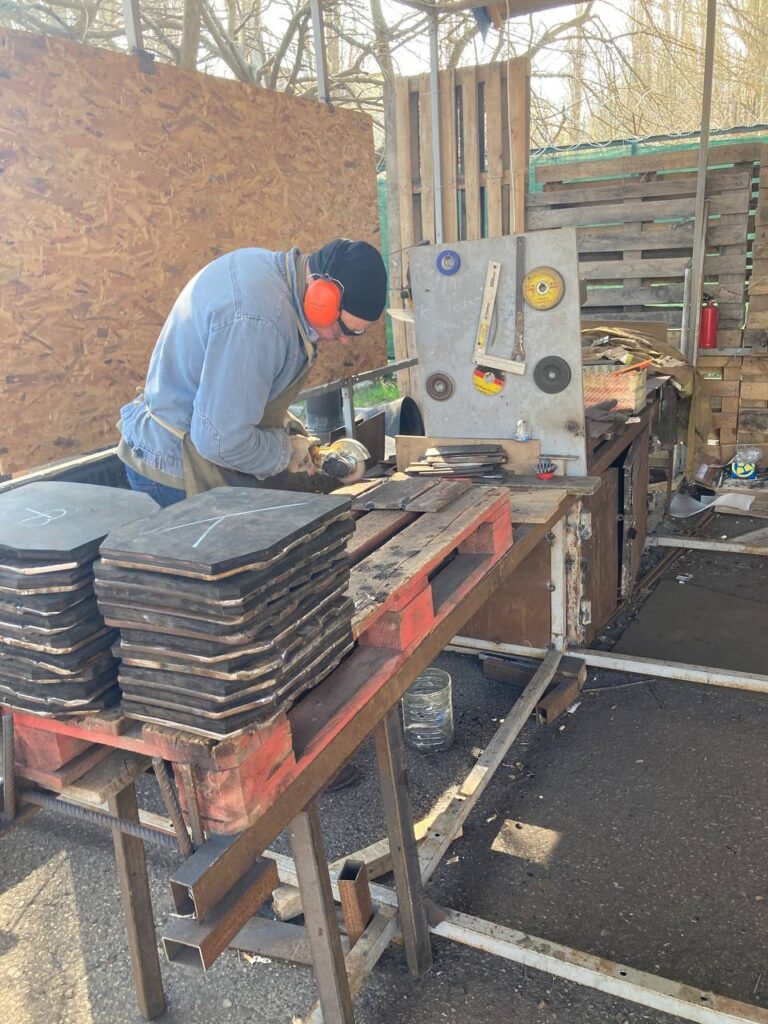
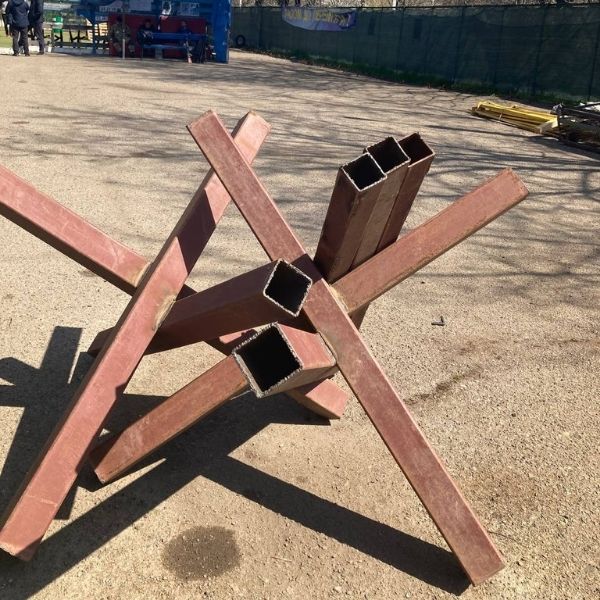
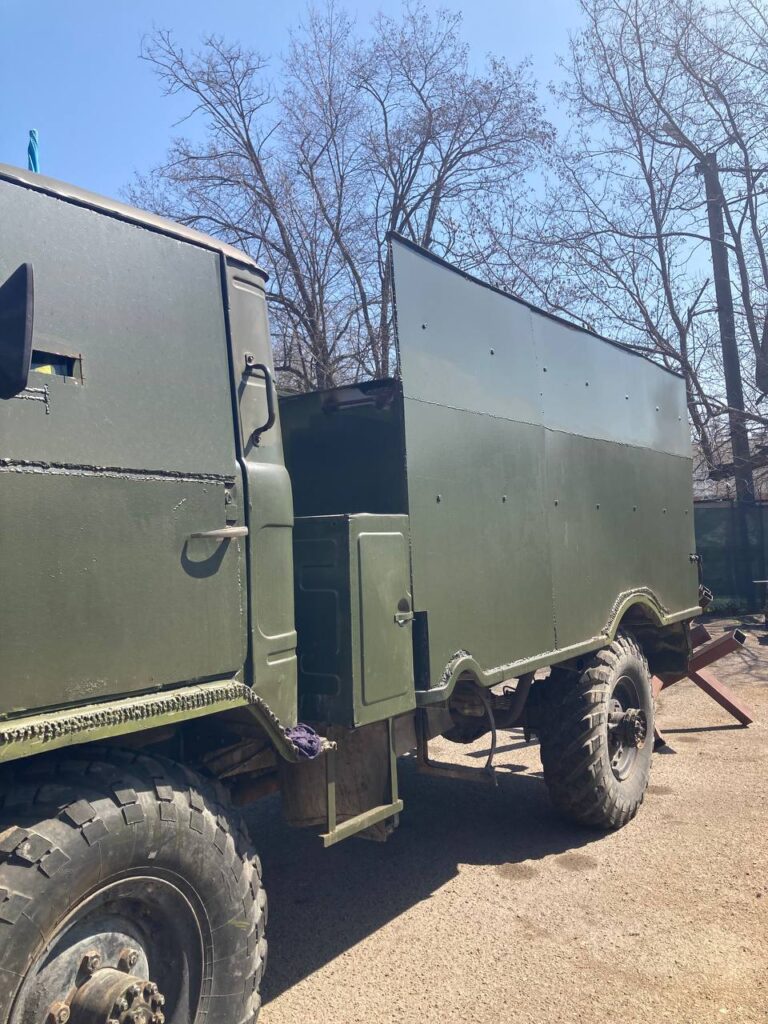
L’età e le tempistiche
Sono stato lì diverse ore, e ho potuto osservare come il ventaglio di età dei partecipanti ai lavori sia veramente ampio: dai 18 fino si 60 anni. Si tratta di studenti, falegnami, marinai, commercianti, artisti, non conta cosa facevi prima. Ora l’unica cosa importante è capire come difendersi dall’invasore. Hanno preparato 7 contingenti, con l’ottavo vogliono approfondire la preparazione prima di renderlo disponibile. Le tempistiche per un addestramento variano in base alla persona, alla sua attitudine, all’uso delle armi, magari esperienze pregresse e, importantissima, alla sua capacità di lavorare in team. Può variare da un paio di settimane fino a un mese e oltre.

La minaccia a Odessa
Il comandante mi ha raccontato di un’ operazione diversiva con la quale hanno spinto i Russi a credere, tramite spostamenti di macchine avanti e indietro, di aver ottenuto ingenti rifornimenti con conseguente minaccia alle posizioni nemiche. Così li hanno costretti ad una ritirata. Ho chiesto a Andrey quale fosse l’attuale pericolo principale per la città di Odessa, avendo io stesso ricevuto messaggi dall’Italia di persone preoccupare per un possibile attacco dalla Transnistria o da Nord della Crimea. La sua risposta è stata in un certo modo tranquillizzante: perché arrivino da Kherson, a nord della Crimea, i mezzi impiegherebbero almeno 3 giorni di avanzata continua, ipotizzando per assurdo che l’esercito ucraino li lasci passare senza colpo ferire. Con invece attacchi alle salmerie e ai mezzi trasportanti carburante, i tempi di percorrenza sono enormemente aumentati.
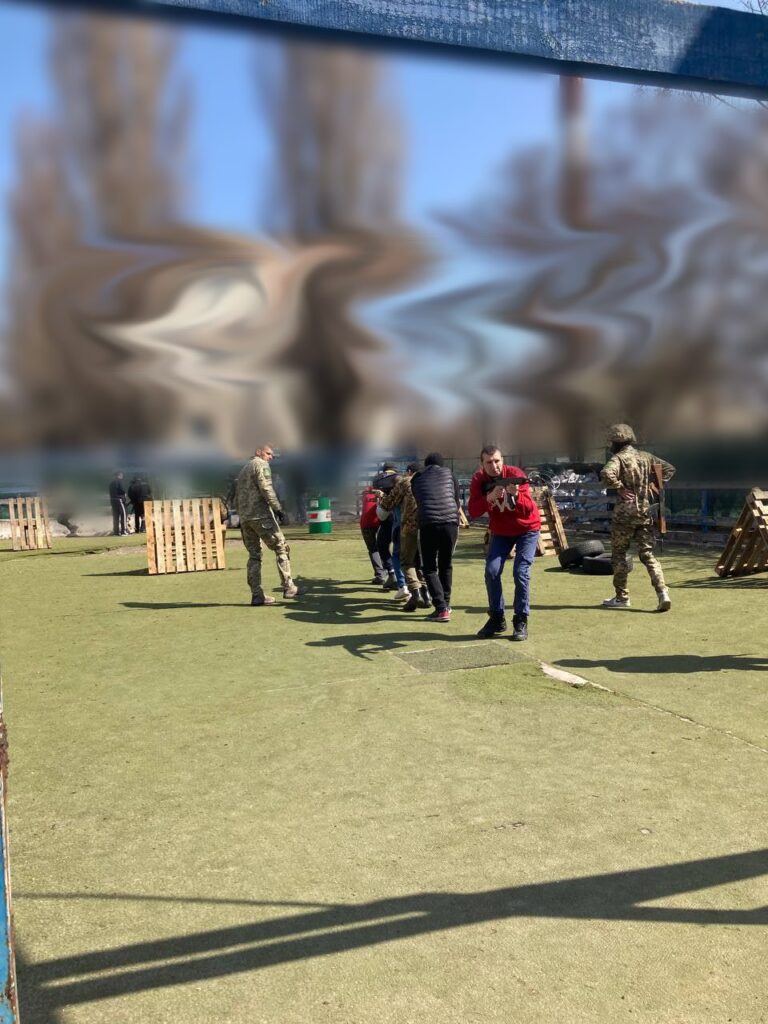
Dalla Transnistria stesso discorso. Considerando anche che le vie percorribili dai mezzi pesanti sono presidiate e protette. Durante la prima settimana di guerra, uno sbarco dal mare su Odessa sarebbe stato devastante, ma ormai anche quella opzione è tendenzialmente da scartare, in quanto hanno allestito difese e l’esercito è pronto anche da quel lato. Ha ribadito infatti, che il vero problema è il sostanziale dominio che i russi hanno del cielo. Il pericolo principale viene infatti dai missili e dai bombardamenti. Andrey ha ribadito l’importanza di ricevere difese anti aeree e velivoli per contrastare l’armata russa anche in aria.
La nostra conversazione è terminata con un video
Il video mostra il processo di raccolta di uno speciale inchiostro con il quale è stata scritta una lettera in cui si ringraziano gli Stati che hanno aiutato l’Ucraina. Si invita loro a chiudere il cielo per prevenire ulteriori bombardamenti e a donare altre armi. L’inchiostro è il sangue dei soldati del 222esimo. Letteralmente. Allego il link del video, la visione non è cruenta, e il messaggio che veicola è estremamente potente.
Guardare negli occhi chi ha dovuto lasciare il proprio lavoro per impugnare un fucile, anche pensionati che invece di portare i nipoti al parco strisciano per terra con decine di chili di equipaggiamento addosso. Osservare le loro espressioni, il tono dei loro discorsi, è stato incredibile. Sono grato ad Andrey per la possibilità concessami, e spero che qualcosa sia arrivato anche a voi.

English Version
I was a guest of the Volunteer Military Battalion of the National Resistance “Defense of Odessa. Born in battle”, stationed in Odessa.
Since this phase of the war began, I remember that Russia’s attack has been an act since 2014, so since February 24, the recruitment of troops in every part of Ukraine has begun eagerly. In particular, here in Odessa, mock emergencies were put in place in the city center, to observe how people reacted and concretely assess the soul of potential recruits, in order to select the best, the most willing to put the good of the Nation above their own. Fake attacks, or fake bombs, resulting in civilian reactions.

The call to arms was received by a large number of subjects, but since they could not organize functional training centers due to lack of facilities, the Army agreed with the Territorial Defense to use their training facilities where they could impart a sufficient level of military techniques disparate from each other to make the recruits future members of the army. They are not given weapons right away, they are trained with wooden facsimiles to avoid disturbances. In some cases, people who have been tested but are not yet ready to join the army are allowed to handle real equipment but only under close supervision of superiors, often well-trained army officers who are used to the situation.

Andrey Vagapov’s battalion
This specific battalion is made up of individuals who, for various causes (injuries, lack of limbs or other physical inefficiencies) are not suitable for the regular army. The commander himself, Andrey Vagapov, having been hit three times, was forced to leave the “hot zones”, but given his vast experience, it would have been a waste that Ukraine cannot afford to discharge him. Therefore, combining a great experience at the top, and an iron will of wanting to serve the Nation, once the training is over, the troops will become reserves, therefore destined to the second line. This does not detract from the fact that, perhaps in small groups, selected subjects of this company can perform certain tasks better than other groups.
To shoot with a sniper you are fine even if you have an artificial leg
Recruits and training
were the words of the commander. The goal of troops to be trained was 500 units: 2500 showed up, about 100 were discarded for mental instability unsuitable for the role of militia. Because of this large influx, there was great organizational confusion at first. Five training groups were created, each with different tasks, with no difference between men or women, from military diversions, to support of charters.
The training is composed of a wide range of activities; the recruits are trained through simulations, to perform tactical medicine (I have witnessed a part of the lesson, in which it was required, during the rescue of a comrade on the ground, to hook the tongue to the lower lip with an underwire, piercing it, to prevent it from being a cause of suffocation), to resist psychologically in battle, to offer support to civilian victims and to fight both a small and large spaces, in large or small groups, and camouflage tactics. They are also taught to handle small mechanical equipment and defense techniques, with specific attention to anti-tank defense from the fearsome Russian armored vehicles.

Defense techniques
At the end of the training, the militiamen will also be prepared to build a sort of tribulations made of wood and metal, to be placed under the ground in order to hinder the advance of the enemy crawlers. 80% of them have already the necessary equipment, bulletproof vests and weapons, and a first contingent of the 222nd is already in the second line, to defend their families, their homes and their nation. It is now awaiting official confirmation from the Minister of Defense to become a battalion of the 122nd Brigade.
In the facility where training takes place, there are stations that forge plates for body armor, iron bars for territorial defense, and iron plates to provide armor to formerly civilian vehicles, now converted to military by this work. Inside the facility, there is also a station where volunteers relentlessly tear cloth to create camouflage for trenches and vehicles; this point produces more camouflage than the entire Odessa region combined, so far over 8500 square meters have been created here during the first month.


The daily organization
During the first week of war the whole place (training, forge and camouflage production) was open 24 hours a day, now the opening hours are from 9:00 to 19:00, even if every night someone stays there not wanting to lose precious hours and during the night there are armed men guarding the complex. The extra people who want to help are positioned in offices that deal with bureaucracy: creating documents and permits needed for the business. Every day, there is traffic of over 100 of just the military, spread out over different tasks and different trainings.



Age and timing
I was there several hours, and I could see that the age range of the participants in the work is really wide: from 18 to 60, they are students, carpenters, sailors, traders, artists, it doesn’t matter what you did before. Now the only important thing is to understand how to defend yourself from the invader. They have prepared 7 contingents, with the eighth they want to deepen the preparation before making it available. The timing of a training varies depending on the person, their aptitude for the use of weapons, perhaps previous experience and, very important, their ability to work in a team. It can range from a couple of weeks to a month or more.

The threat to Odessa
He told me of a diversionary operation by which they had led the Russians to believe, by moving cars back and forth, that they had obtained large supplies and thus threatened enemy positions, forcing them to retreat. I asked Andrey what was the current main danger to the city of Odessa, having myself received messages from Italy from people worried about a possible attack from Transnistria or North Crimea. His answer was somewhat reassuring: in order to arrive from Kherson, north of the Crimea, the vehicles would take at least 3 days of continuous advance, assuming that the Ukrainian army would let them pass without a blow. Instead, with attacks to the tanks and to the vehicles carrying fuel, the travel times have increased enormously.

From Transnistria, the same is true, considering that the roads that the trucks can use are guarded and protected. During the first week of war, a landing from the sea on Odessa would have been devastating, but by now even that option tends to be discarded, as they have set up defenses and the army is ready even on that side. He reiterated in fact, that the real problem is the substantial dominance that the Russians have of the sky. The main danger comes from missiles and bombings. Andrey reiterated the importance of receiving anti-air defenses and aircrafts to counter the Russian army also in the air.
Our conversation ended with a video
Our conversation ended with a video: the process of collecting a special ink with which a letter was written thanking the states that helped Ukraina and inviting them to close the sky to prevent further bombings and to donate more weapons. The ink is the blood of the soldiers of the 222nd. Literally. I attach the link to the video, the viewing is not gory, and the message it conveys is extremely powerful.
To look into the eyes of those who had to leave their jobs to hold a rifle, even retirees who instead of taking their grandchildren to the park crawl on the ground with dozens of pounds of equipment on them, to watch their expressions, the tone of their speeches, was incredible. I’m grateful to Andrey for the opportunity given to me, and I hope that something got through to you as well.

a cura di
Giacomo Minelli
Seguici anche su Instagram!


